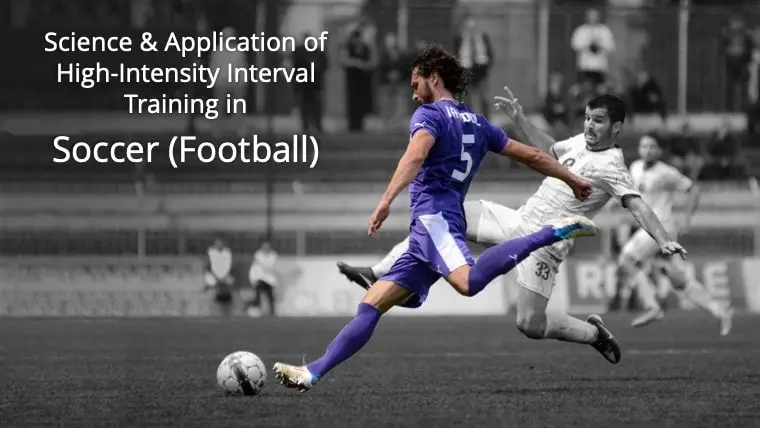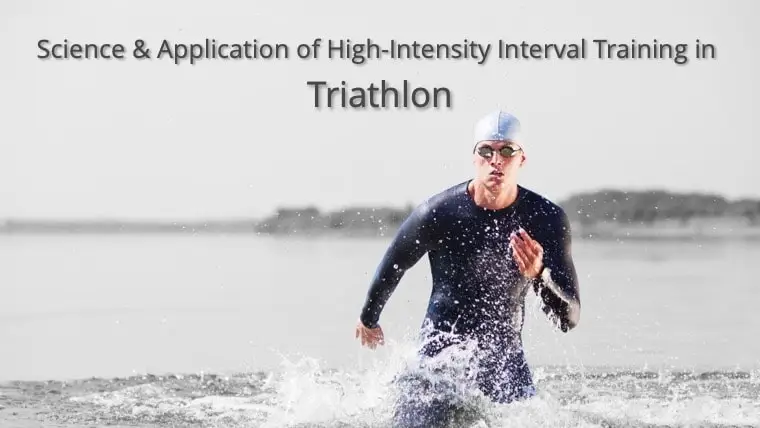Complete Guide to HIIT Science: The Revolutionary Framework Changing Athletic Training

High-Intensity Interval Training has evolved far beyond simple “work hard, rest, repeat” protocols. This complete guide to HIIT science reveals the sophisticated framework that’s revolutionizing how athletes and coaches approach conditioning across all sports.
Martin Buchheit, the renowned expert behind HIIT Science, developed this groundbreaking model during his tenure as Head of Performance at PSG and Lille OSC. Since its 2013 publication in Sports Medicine, it has accumulated over 2,600 citations, making it one of the most influential frameworks in exercise science.
Traditional HIIT approaches focus primarily on cardiovascular benefits, but this complete guide to HIIT science examines the acute physiological responses across three critical domains that determine training outcomes.
Understanding the HIIT Science Model Framework
The HIIT Science Model examines training through three critical physiological domains that work both independently and synergistically to determine adaptation responses:
Aerobic Demands: The Foundation of Endurance
Aerobic demands encompass central cardiovascular system responses, including heart rate elevation and cardiac output maximization. Peripheral muscle oxygenation becomes crucial as working muscles demand increased oxygen delivery. The key metric here is time spent at high percentages of VO2max, specifically the 90-95% range where maximum aerobic adaptations occur.
Research shows that different HIIT formats can dramatically alter time spent in these target zones. Short intervals like 15:15 protocols can achieve over 50% time in the VO2max zone, while longer formats may be less efficient despite higher perceived exertion.
Anaerobic Demands: Power and Metabolic Stress
Anaerobic demands focus on lactate production and accumulation, reflecting the body’s reliance on glycolytic energy systems. When oxygen demand exceeds supply, muscles shift to anaerobic metabolism, producing lactate as a byproduct.
Glycolytic system activation creates metabolic perturbations that signal specific training adaptations. These perturbations can enhance lactate buffering capacity and improve the body’s ability to maintain high-intensity efforts despite accumulating metabolic byproducts.
Understanding anaerobic demands allows precise control over training stress while targeting specific metabolic improvements.
Neuromuscular Load: The Often-Overlooked Component
Neuromuscular load represents musculoskeletal strain on tendons, muscles, and connective tissues. This includes mechanical work performed and force production requirements during training.
Fatigue affecting muscle structure and neural drive can persist for 24-72 hours post-exercise, significantly impacting subsequent training sessions. This component often determines whether athletes can maintain quality in technical skills, strength training, or competition performance.
The HIIT Science Model’s genius lies in recognizing that neuromuscular load management often trumps traditional cardiovascular metrics in determining training success.
The 6 HIIT Types: Your Complete Guide to HIIT Science Training
Type 1: Pure Aerobic Training
Type 1 protocols target high aerobic stimulus with minimal lactate production and neuromuscular load. These sessions maintain cardiovascular fitness without creating fatigue that interferes with other training components.
Characteristics: Heart rate reaches 85-95% maximum, lactate remains below 4 mmol/L, minimal mechanical stress on muscles and joints.
Optimal applications: Maintenance phases, pre-competition periods, recovery days when some training stimulus is needed.
Example protocol: 12 x 10:20 at moderate intensity (100% of maximal aerobic speed), allowing complete aerobic energy system engagement without anaerobic contribution.
Type 2: Aerobic + Neuromuscular Training
Type 2 combines aerobic system development with mechanical work, creating sport-specific conditioning while maintaining low lactate levels. This approach allows movement pattern practice under cardiovascular stress.
Characteristics: High heart rate response, low lactate accumulation, significant mechanical work through changes of direction, jumping, or sport-specific movements.
Optimal applications: Technical skill development under fatigue, sport-specific conditioning, maintaining movement quality during cardiovascular training.
Example protocol: Change-of-direction running intervals, agility ladder combinations with running intervals, plyometric circuits with aerobic intervals.
Type 3: Aerobic + Anaerobic Training
Type 3 targets both oxidative metabolisms, creating high lactate levels while minimizing neuromuscular load. This classic HIIT approach maximizes metabolic stress while preserving mechanical function.
Characteristics: High heart rate (90-100% maximum), significant lactate accumulation (8-15 mmol/L), low mechanical stress through sustained movement patterns.
Optimal applications: Off-season conditioning, metabolic capacity development, when neuromuscular recovery is prioritized.
Example protocol: 4 x 4-minute intervals at 90-95% heart rate maximum on stationary bikes or rowing machines, focusing on sustained intensity without direction changes.
Type 4: The “Atomic Bomb” Protocol
Type 4 simultaneously targets all three systems, creating maximum training stimulus across aerobic, anaerobic, and neuromuscular domains. Martin Buchheit coined this the “atomic bomb” due to its comprehensive but potentially overwhelming training stress.
Characteristics: Maximum heart rate response, very high lactate accumulation (15+ mmol/L), significant neuromuscular load through repeated high-intensity efforts with direction changes.
Optimal applications: Peak conditioning phases when maximum adaptation is needed and recovery time is available. Use sparingly due to high fatigue cost.
Example protocol: Repeated sprints with multiple direction changes, small-sided games with maximum effort, combined strength and conditioning circuits.
Type 5: Anaerobic + Neuromuscular Training
Type 5 focuses on power and speed development with minimal aerobic component. These sessions develop anaerobic power while creating significant neuromuscular stress through explosive movements.
Characteristics: Variable heart rate response, very high lactate production from explosive efforts, maximum neuromuscular load through sprint mechanics and power production.
Optimal applications: Power development phases, sprint training blocks, when aerobic fitness maintenance isn’t the primary goal.
Example protocol: 8 x 30-second all-out sprints with 4-minute recovery, allowing near-complete lactate clearance between efforts while maintaining neuromuscular quality.
Type 6: Pure Neuromuscular Training
Type 6 targets strength, power, and speed development with minimal metabolic demands. These sessions focus exclusively on neuromuscular adaptations without cardiovascular stress.
Characteristics: Low heart rate response, minimal lactate production, maximum neuromuscular load through heavy resistance or explosive movements.
Optimal applications: Strength development phases, power training, when cardiovascular recovery is prioritized while maintaining neuromuscular stimulus.
Example protocol: Traditional weight training with compound movements, Olympic lifting sessions, maximum strength development protocols.
Solving the Concurrent Training Problem with HIIT Science
One of the most significant applications of this complete guide to HIIT science addresses the concurrent training interference effect—the phenomenon where combining cardiovascular and strength training compromises strength adaptations.
Understanding Interference Mechanisms
Residual Fatigue: Cardiovascular training creates immediate fatigue that reduces power output in subsequent strength sessions. This acute effect can persist for 6-24 hours, compromising the training stimulus needed for strength adaptations.
Molecular Signaling Conflict: At the cellular level, aerobic and strength training send opposing signals to muscle fibers. Aerobic training activates AMPK pathways signaling “build mitochondria and improve oxidative capacity,” while strength training activates mTOR pathways signaling “build muscle fibers and increase force production.”
When these signals compete, neither adaptation is optimized, resulting in compromised outcomes for both cardiovascular and strength improvements.
The HIIT Science Solution
The complete guide to HIIT science solves interference through strategic selection of training types. Type 1 protocols provide cardiovascular stimulus with minimal neuromuscular disruption, allowing strength training quality to be maintained.
Research demonstrates that athletes using Type 1 HIIT on strength training days maintain power output within 2-3% of baseline, compared to 8-12% decreases with traditional high-intensity protocols.
Advanced HIIT Science Programming Strategies
Precision Control of Aerobic Demands
Time spent at high VO2max (90-95% maximum) can vary dramatically between formats.
Most efficient protocols: Short intervals (15:15) and small-sided games achieve 50-70% time in target zones through optimal work-to-rest ratios that maintain intensity without excessive fatigue.
Moderately efficient protocols: Traditional long intervals (4×4 minutes) achieve 30-45% time in target zones but may create more anaerobic stress than desired.
Less efficient protocols: Sprint interval training and repeated sprints achieve only 20-35% time in aerobic zones due to high anaerobic contribution and longer recovery requirements.
Key insight: Maximum aerobic adaptation doesn’t require maximum intensity. The sweet spot balances intensity with sustainability to maximize time in target physiological zones.
Precise Anaerobic Contribution Management
This complete guide to HIIT science reveals how to manipulate lactate production through two primary variables:
Intensity Manipulation (maintaining constant work:rest ratios):
- 100% of maximal aerobic speed (MAS): Primarily aerobic, lactate 2-4 mmol/L
- 105% of MAS: Mildly anaerobic, lactate 4-6 mmol/L
- 110% of MAS: Moderately anaerobic, lactate 6-10 mmol/L
- 115% of MAS: Strongly anaerobic, lactate 10-15 mmol/L
Duration Manipulation (maintaining constant intensity):
- 10-second efforts: Minimal lactate accumulation (2-3 mmol/L)
- 20-second efforts: Moderate lactate accumulation (4-8 mmol/L)
- 30-second efforts: High lactate accumulation (8-12 mmol/L)
- 45+ second efforts: Maximum lactate accumulation (12-20 mmol/L)
Practical application: Want high aerobic stimulus with low lactate? Use 10:10 intervals at 100% MAS. Need metabolic stress? Extend duration to 30+ seconds or increase intensity to 110-115% MAS.
Revolutionary Neuromuscular Load Management
The complete guide to HIIT science truly shines in neuromuscular load management, offering practical solutions for maintaining training stimulus while controlling fatigue.
The 10:20 Protocol Discovery
Martin Buchheit’s research comparing different interval formats revealed surprising neuromuscular responses:
30:30 intervals: 10% decrease in jump height immediately post-exercise, indicating significant neuromuscular fatigue that could impair subsequent training quality.
Repeated sprints: 10% decrease in jump height with additional concerns about maintaining sprint mechanics under fatigue.
10:20 intervals: No decrease in jump height, with some subjects showing slight improvements due to potentiation effects.
The mechanism: 10-second work periods prevent significant lactate accumulation and metabolic perturbation while 20-second recovery periods maintain aerobic stimulus. This combination provides cardiovascular benefits without neuromuscular compromise.
Managing High-Speed Running Load for Team Sports
For team sport athletes, managing high-speed running volume becomes crucial when combining HIIT with game demands. This complete guide to HIIT science provides innovative solutions:
Strategic Running Pattern Manipulation
Straight-line running protocols:
- Maximum high-speed running accumulation
- 12 x 10:20 intervals = approximately 600 meters of high-speed running
- Best for: Maintaining speed during off-season or when game volume is low
Curved running protocols (45-degree directional changes):
- Dramatically reduced high-speed running accumulation
- 12 x 10:20 intervals = 0 meters of straight-line high-speed running
- Benefits: Maintains aerobic stimulus while preserving legs for technical training
- Application: In-season when high-speed running load from games is sufficient
Change-of-direction running protocols:
- Moderate high-speed running with added mechanical complexity
- 12 x 10:20 intervals = approximately 400 meters of high-speed running
- Application: When aerobic stimulus and movement specificity are both priorities
Precise Distance Adjustments for Direction Changes
Research has established specific distance reductions to account for additional energetic costs:
- Single direction change: Reduce straight-line distance by 3% to maintain equivalent energy expenditure
- Two direction changes: Reduce distance by 5% due to increased deceleration and acceleration demands
- Three or more direction changes: Reduce distance by 7-8% to account for cumulative direction change costs
These adjustments ensure equivalent physiological stimulus while manipulating mechanical stress patterns.
Real-World Application: Professional Soccer Case Study
Martin Buchheit’s work with PSG and Lille OSC provides a compelling real-world example of this complete guide to HIIT science in action.
The Challenge
A key player received a suspension preventing game participation for two weeks. The challenge: maintaining his chronic high-speed running load (typically 600-800 meters per game) through training without overloading other systems or creating excessive fatigue.
The Solution: Systematic Pattern Rotation
Week 1 – High-volume maintenance:
- Days 1 & 3: Straight-line running intervals (600m high-speed accumulation)
- Days 2 & 4: Curved running patterns (aerobic maintenance, 0m high-speed)
- Day 5: Mixed change-of-direction (400m high-speed with movement specificity)
Week 2 – Tapering approach:
- Days 1 & 3: Mixed straight-line and single direction changes (500m high-speed)
- Days 2 & 4: Primarily curved patterns with technical work
- Day 5: Light change-of-direction with ball skills
Outcome: The player returned to competition with maintained fitness levels and no accumulated fatigue, demonstrating the practical value of systematic HIIT science application.
Programming Considerations for Different Training Contexts
This complete guide to HIIT science emphasizes that context determines optimal protocol selection:
Pre-Competition Phase Programming
Primary focus: Type 1 and Type 2 protocols to maintain fitness without compromising neuromuscular function.
Rationale: Competition performance depends on preserved power output, reaction time, and technical skill execution—all compromised by excessive fatigue.
Example weekly structure: 2-3 Type 1 sessions, 1 Type 2 session with sport-specific movements, complete avoidance of Type 4 and Type 5 protocols.
Build-Up Phase Programming
Primary focus: Type 3 and Type 4 protocols for comprehensive physiological development.
Rationale: When competition pressure is absent and recovery time is available, maximize training stimulus across all systems.
Example weekly structure: 2 Type 3 sessions for metabolic development, 1 Type 4 session for peak adaptation, 1-2 Type 1 sessions for recovery.
Strength Training Day Programming
Primary focus: Type 1 protocols exclusively to avoid training interference.
Rationale: Maintain aerobic stimulus without compromising strength adaptations through neuromuscular fatigue or molecular signaling conflicts.
Implementation: Schedule Type 1 sessions 6+ hours after strength training or on separate days entirely.
Recovery and Deload Week Programming
Primary focus: Type 1 with curved running patterns for active recovery.
Rationale: Maintain training rhythm and basic conditioning while allowing comprehensive physiological recovery.
Volume adjustment: Reduce session duration by 30-50% while maintaining movement patterns and basic intensity zones.
Key Takeaways from This Complete Guide to HIIT Science
HIIT effectiveness comes from precision, not maximum intensity. The most effective protocols often operate at submaximal intensities that allow optimal time in target physiological zones.
Context determines the optimal training choice. There’s no universally “best” HIIT type—only what’s appropriate for current training goals, recovery status, and competition demands.
Neuromuscular load management often matters more than cardiovascular metrics. Traditional heart rate-based programming ignores the component that most significantly impacts subsequent training quality.
Small programming adjustments create dramatically different outcomes. Subtle changes in work duration, rest periods, or movement patterns can shift training from Type 1 to Type 4 protocols.
The concurrent training problem has practical solutions. Strategic HIIT selection maintains aerobic fitness while preserving strength adaptation capacity.
Movement patterns dramatically alter training stress. The same interval protocol can create vastly different neuromuscular and high-speed running loads through simple pattern modifications.
Transform Your Training with HIIT Science
This complete guide to HIIT science represents a fundamental paradigm shift from one-size-fits-all approaches toward precision training methodologies. Martin Buchheit’s framework provides coaches and athletes with tools for making informed, strategic decisions about high-intensity training implementation.
Whether working with elite athletes pursuing marginal gains or fitness enthusiasts seeking optimal health outcomes, the HIIT Science Model delivers targeted adaptations without unwanted side effects that plague traditional high-intensity approaches.
The future of conditioning lies not in training harder, but in training smarter through scientific understanding of physiological responses and strategic manipulation of training variables.
For continued learning and implementation support, explore resources from HIIT Science, and consider connecting with certified professionals who understand these advanced training concepts.
Ready to revolutionize your training approach? Start implementing these HIIT science principles today and experience the difference that precision programming makes in athletic performance and adaptation outcomes.
Metabolic Conditioning for Team Sports
Unlock Your Team’s Potential with Martin Buchheit’s Science-Proven Metabolic Conditioning Methods






